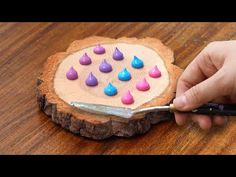5 Ways to Remove Acrylic Paint from Wood

Introduction:
Acrylic paint is a popular choice for many DIY and art projects due to its versatility and ease of use. However, accidents happen, and it can be frustrating when acrylic paint ends up on your beautiful wooden furniture or floors. Fear not! In this article, we will explore five effective methods for removing acrylic paint from wood without causing any damage.
1. Scrape Off the Paint:
If the acrylic paint is still wet or relatively fresh, gently scraping it off with a plastic scraper or an old credit card can be an effective method. Make sure to hold the scraper at a shallow angle to avoid gouging the wood surface. Work slowly and carefully so as not to cause any damage.
2. Use Acetone:
Acetone, commonly found in nail polish remover, can also help in removing acrylic paint from wood surfaces. First, test the acetone on a small, inconspicuous area to ensure it won’t damage the finish of your wood. If the test is successful, dampen a cotton ball or cloth with acetone and gently rub it on the stained area. The acrylic paint should start to dissolve and lift from the surface.
3. Employ Rubbing Alcohol:
Isopropyl alcohol (rubbing alcohol) can also break down and remove acrylic paint. Similar to acetone, first test its effect on a hidden area of your wood surface. If successful, moisten a soft cloth with rubbing alcohol and gently rub it on the paint spot in a circular motion until the paint dissolves.
4. Apply a Paint Thinner or Paint Stripper:
For dried or stubborn acrylic paint stains, employing a commercial-grade paint thinner or stripper may be necessary. Make sure to choose a product that is safe for wood surfaces and follow the manufacturer’s instructions carefully. Ideally, apply the thinner using a brush and let it sit for the recommended time before gently scraping away the loosened paint. Thoroughly clean the surface with a damp cloth once the paint is removed.
5. Sanding:
As a last resort, you can turn to sanding for removing acrylic paint from wood surfaces. For this method, start by using a fine-grit sandpaper (180-220 grit) and gently sand the area in a circular motion until the paint is removed. Be cautious not to remove too much of the wood surface or damage the wood’s finish. Once done, clean the area with a damp cloth and consider applying a fresh coat of finish if needed.
Conclusion:
Removing acrylic paint from wood may seem like a daunting task, but these five methods can help you address even the most stubborn stains. Always remember to test any cleaning solution on a hidden area first and work slowly and carefully to avoid any potential damage to your wood surfaces. With some patience and persistence, your wooden furniture or floors will look as good as new!






